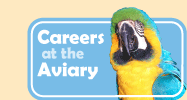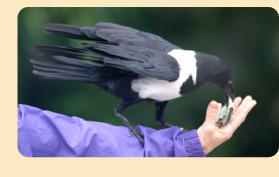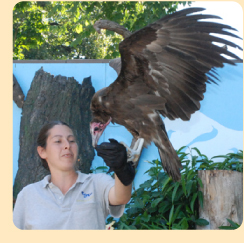1. Come to our indoor free-flight bird show in cooler months or our outdoor free-flight bird show in warmer months. See our birds performing their trained natural behaviors and stick around after to talk to our training staff.

2. Sign up for our Trainer for a Day program to experience what it is like to be atrainer at the National Aviary.
3. Read the books “Don’t Shoot the Dog” by Karen Pryor or “Good Bird! A Guide to Solving Behavior Problems in Companion Parrots” by Barbara Heidenreich.
4. Go to an animal training workshop. If you have a pet parrot at home, Natural Encounters, Inc. offers a workshop series on “The Art and Science of Training Companion Parrots.”






 The National Aviary’s staff is made up of some of the best bird trainers in the world. They spend large portion of each day training birds on and off-exhibit to do many different behaviors. When you visit the National Aviary you will have the opportunity to see our birds demonstrate trained behaviors during our many daily encounters. One of the most often asked questions during these encounters is, “How did you get the birds to do that?” or, “Why don’t they fly away instead of coming to you?” The answer has to do with the way we have trained them.
The National Aviary’s staff is made up of some of the best bird trainers in the world. They spend large portion of each day training birds on and off-exhibit to do many different behaviors. When you visit the National Aviary you will have the opportunity to see our birds demonstrate trained behaviors during our many daily encounters. One of the most often asked questions during these encounters is, “How did you get the birds to do that?” or, “Why don’t they fly away instead of coming to you?” The answer has to do with the way we have trained them.
 BACK TO TOP
BACK TO TOP In order to become an animal trainer in a zoo, you need to go to college to earn a degree in a biology or environmental education related field. Our trainers have degrees in zoology, animal science, wildlife management, psychology, and education to name a few. Our trainers who have degrees in other, non-animal disciplines had experience working with animals in other settings before coming to the National Aviary.
In order to become an animal trainer in a zoo, you need to go to college to earn a degree in a biology or environmental education related field. Our trainers have degrees in zoology, animal science, wildlife management, psychology, and education to name a few. Our trainers who have degrees in other, non-animal disciplines had experience working with animals in other settings before coming to the National Aviary.
